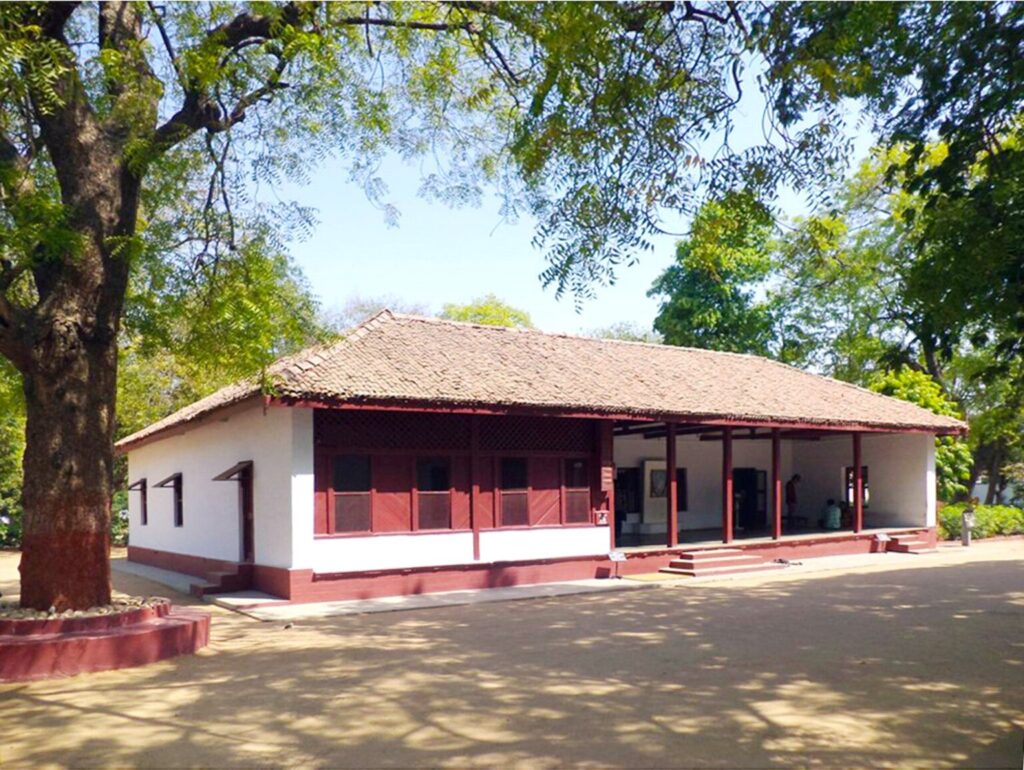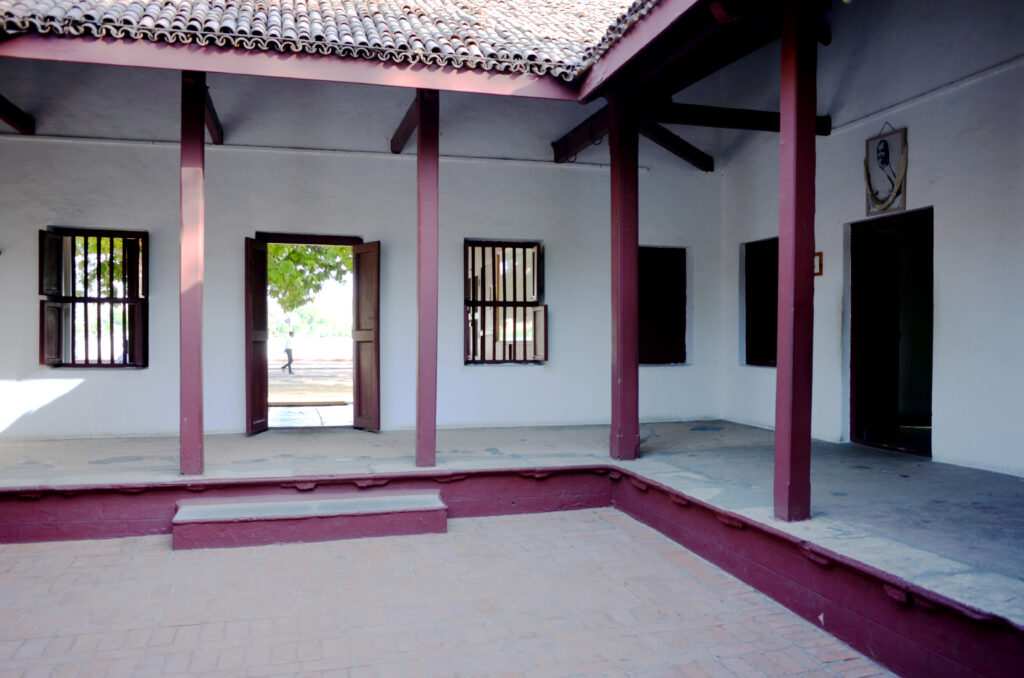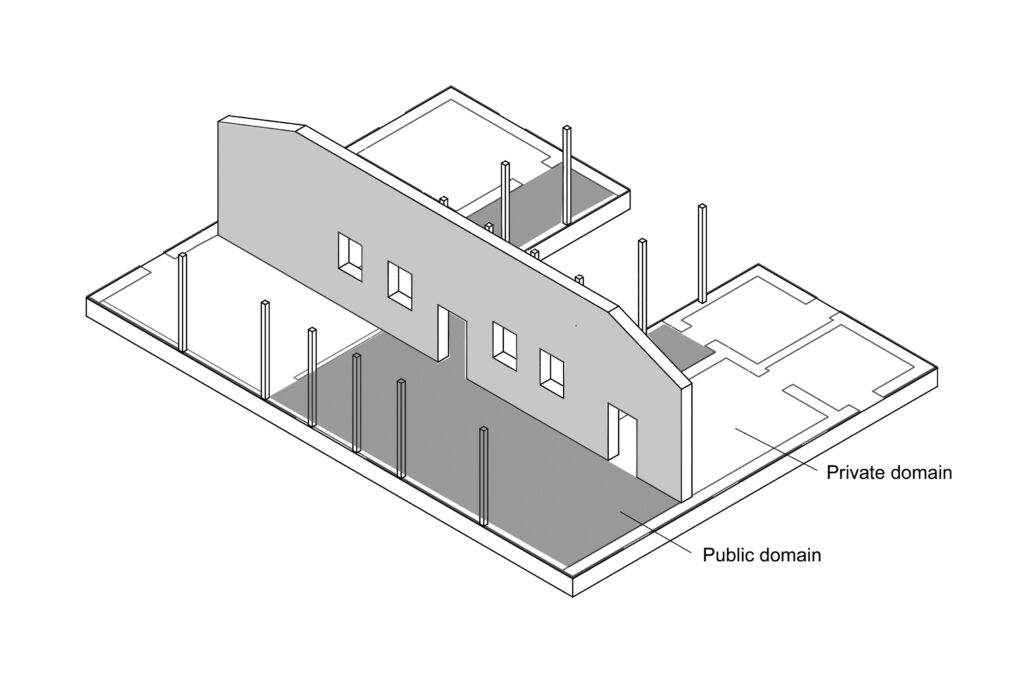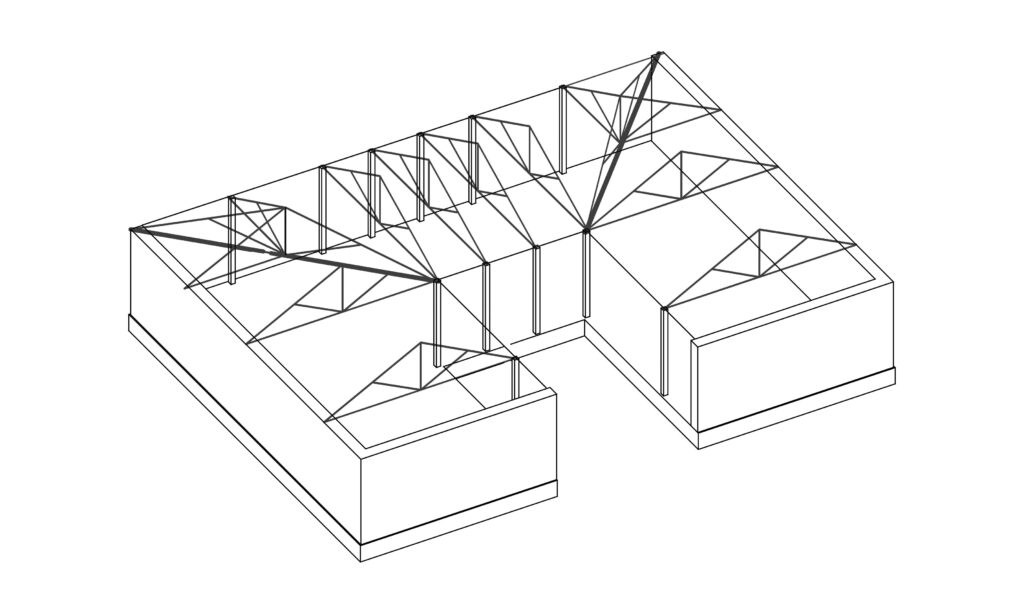
Within the self-evident natural simplicity of the idea of modernity lies an abstract, enigmatic complexity. To some, it appeared as a pass to freedom, but at the cost of becoming a mountain of oppression for others. It is both a metaphysical conception and a political reality. Today, we can find many narratives and discourses about and around it, and see architecture in that light. Here is a renowned Foucauldian critic
“The burden of reason, dreams of freedom; the desire for power, resistance to power: all of these are elements of modernity. There is no promised land of modernity outside the network of power. Hence one cannot be for or against modernity; one can only devise strategies for coping with it. These strategies are sometimes beneficial, often destructive; sometimes they are tolerant, perhaps all too often they are fierce and violent.”[i] Likewise, for Habermas-ian Enrich Dussel, the South American philosopher, one-time student, and critic of French philosopher Paul Ricoeur, “A new philosophical project must be developed that is capable of going beyond Eurocentric philosophical modernity, by shaping a global trans-modern pluriverse!”[ii] But, while Dussel metaphysically accepts yet surpasses him theoretically, one finds Indian architect and writer Professor Jaimini Mehta holding on to Ricoeur.
Unfazed by any call of the ‘Global’, Mehta still has faith in the idea of a ‘Universal’ modernity, but he too has a problem. He is against Europe’s claim of exclusive ownership of the idea.
He points at “the sense of ownership of modernity”… in the subtle act of taking modernity, which was a theoretically innovative idea, to modernism, which constitutes a politically crucial plan of action.” While looking at architecture, Mehta seems to mean that, essentially universal, modernity was hijacked and put in the service of the radical modernist movement and the ideology of ‘Modernism’ after the European enlightenment of the 18th century, marked by the French Revolution, German Idealism, and the English Industrial Revolution of that time. He believes that modernity existed even outside that ambit in space and time, including Europe itself. Mehta’s coping strategy is releasing the idea of modernity from the clutches of the modern West. For that, he proposes “relocating the modernist discourse on architecture away from the focus on ‘Aesthetic Modernity’ ” (which is a product of enlightenment as defined by German philosopher Jürgen Habermas)[iii], and exploring a vocabulary and framework for carrying out discourse on architecture as a ‘cultural construct’ instead of reading architecture through the lens of Modernism which identifies and rejects tradition and with that wipes out culture.
Mehta states his premises in the first chapter of the book, ‘… we have two distinct ideas of modernity… ’ He offers a ‘distinct’ alternative to the post-18th century enlightenment European Modernity which was based on reason and rationality with no concern for emotion and spirituality, and marked by a rejection of traditions and myths. Whereas his alternative idea of ‘Organic Modernity,’… he states… (a) “is conceived as an organic process of modernisation where the old and new are never in an adversarial position, but the new… is organically and ‘ever so gradually’ incorporated into the existing social and cultural paradigm … altered state of being and the new condition... are never violently opposed to the past; the organic process of modernisation which every society undergoes in the normal course of evolution…” (b) Organic Modernities develop around the respective ‘ethico-mythical nucleus’(s)[iv] of communities. Different communities are to coexist and respect the autonomy of each cultural core while communicating through non-syncretic relationships.
However, strangely, he does not seem to validate or substantiate these propositions directly by citing any distinct evidence or example to qualify any such organic modernity as narrated above. One possible case could be the organic modernisation of the architecture of Humayun’s tomb to that of Akbar’s tomb to the of Taj Mahal to that of Bibi-Ka-Maqbara, which was generally called evolution, within and guided by the Mughal Indian cultural tradition as the ethico-mythical core. Instead, he illustrates the presence of the following specific attributes of the Modernist movement “(a) rationalism, (b) secularisation of culture, (c) autonomous individuals (individuation), (d) universalisation (deculturation), (e) linear historicism and rejection of traditions (ahistoricism), (f) objectivity of the external world, and authorship” to be present also within other situations. He says, “ … it will be wrong to assume that the cultural origins of these markers are all uniquely ‘Western’. As we shall see in this book … some of the qualitative markers appear in every society, if not to the same degree or in the same form.” But this does not prove a distinct difference between the two modernities, as claimed; on the contrary, it is a strong suggestion of semblance with only some quantitative difference. These are precisely the very characteristics he criticised as antagonistic to his idea of organic modernity. Are these, then, exceptions cited to prove the rule? The following essays in the initial chapters could be excellent history lecture material to explain the power of modernism as we understand it rather than organic modernity.
Such a reading of Mehta’s text would be very useful in arguing for Modernism as well in every society, rather different, if not the opposite of his actual intent! But then, it would become somewhat clear later. In chapter five, the author rejects the sovereignty of the modern linear history and diachrony and underscores synchronic layering of traces of the past, memory myths, etc. as legitimate. One can involve them in contemporary work in an imaginative way without any dogmatic restriction of avoiding historicist reference or aesthetic consistency. He pays little interest in evolutionary modernisation visible in contiguous transformation. Hence, he is possibly looking for some such rich instantaneous novelty, not necessarily connected to or derived from the immediate temporal-spatial context, and not unnecessarily disciplined by rationality. However, this is not aesthetic postmodernism. This is different from all three historicisms, as was proposed by Alan Colquhoun [v]. He finds a resonance of his thought in Siegfried Gideon’s monumental historiography, which too had to come under severe cross-criticism for ambiguity. Indeed, Mehta’s history is liberated from scientism and fully amenable to speculative imagination as the subjectivity of the historian is irrefutable. Mehta, a seasoned history teacher, addresses the history-theory combination and suggests even a critical viewing beyond straightforward learning. He highlights how the historiography of Viollet-Le-Duc and Choisy contributed to the rationalised interpretation of architecture and, in turn, to the Aesthetic Modernity of architecture, thriving on the conceptual separated from the perceptual. So, for Mehta, modernisation is more vertical than horizontal, and time remains a neutral, overarching idea like Mahakala within which anything may happen at any time at any place leapfrogging, but will have a creative metaphysical connection to past and culture from the perspective of the present. Enduring progress is a myth or perhaps provisional. If he had his way, he would send the Italian Renaissance to take a different path in the 18th century and avoid European enlightenment.
In the second and third chapters, Mehta’s discourse exemplifies authorship and individuation; Alberti in Renaissance Italy, Mimar Sinan in Turkey, Akbar in Sikri in India, the less-known but very successful late 19th century American architect Frank Furness, and the whole of the early 20th century Vienna secession both bring out a high degree of separation from tradition, conspicuous novelty, and even revolt. None of these cases demonstrates the ‘ever so gradually’ incorporated into the existing social and cultural paradigm’ except perhaps Alberti’s work paradoxically is an early part of the continuous history of rationalisation of architecture.
From Perault to Alberti and further up to reaching enlightenment, as he continues, some more ambiguity in Mehta’s discourse is evident even in seemingly contradictory views regarding Bauhaus within the Third chapter that discusses once he says, “After the end of the war, Bauhaus in Germany picked up the baton, but in the area of art, architecture, and design, in general, it soon became a style: modernism, as opposed to modernity. But a few pages down the text, he says that, “ … we see the emergence of what I have referred to the ‘organic modernity’ also in Europe … we have structural determinants of Lodoli, Laugier, Choisy, and others, the functional determinants of Sullivan and the technological determinants of Bauhaus … In other words, it was organic modernity rooted in the European soil.” Thus, he deduces even Enlightenment as organic modernity! But he won’t let it turn its back to history and would not let it run too fast and create any rupture—a difficult proposition! He raises similar problems while addressing the issue of self-consciousness versus the unconscious, concerning Modern and Traditional. He puts Indian philosopher B.K. Matilal against designer Charles Eames. He criticises self-consciousness as a feature of modernism, and tradition is unconscious aesthetically, but inside that there is the consciousness of life. Then he puts Akbar at a threshold between the two.
Mehta rejects all post-1960 Western criticisms of Modernist architecture as Eurocentric, except that he finds the narrative of Critical Regionalism closest to his idea but, he retains only the concept of the ‘ethico-mythical nucleus’ of Ricoeur for his purpose. Kenneth Frampton’s narratives springing from that idea via Tzonis and Lefaivre, he finds, are unable to respect the deeper end of non-western, local cultures, being limited to detecting only the geo-climatic moderation. William Curtis recommended Doshi’s work as a model for future architecture in India, but Mehta says that he has failed to recognise an even larger prospect of that. He even challenges Frampton’s analysis of Finnish architect Jørn Utzon’s Bagsvaerd Church, alleging that the claim of reference to a Chinese pagoda roof is false and amounts to forcing an opinion in service of his argument of regionalism, while that connection has been proven to be true beyond doubt by some dedicated researchers. It seems Utzon’s comment about the roof explains only the inside ceiling and soffit that incorporate local aspects, whereas the outside or top part of the pitched roof has the Chinese form. Mehta wants to requalify the critical regionalist discourse here into a discourse of local resistance against universal modernity. He finds spirituality as a unifying force beyond bias. But this too runs some risk of self-contradiction by negating the policy of leaving cultural cores independent. In chapter seven, one can see somewhat the opposite in Mehta’s acceptance of architecture falsely categorised as Indo-Saracenic where eclecticism creates friendly aesthetic combinations across styles. He includes them in organic modernity. Still, again, they are presented as exceptions and somehow underline the attributes of modernism. Nevertheless, chapter eight, written on Gandhi Ashram’s architecture, is the most powerful piece in the book. Here the author successfully connects Gandhi’s philosophy and shows its embodiment in the Hriday Kunj building.

Here, Mehta attempts to connect the concept of a ‘Non-Syncretic’ relationship, which is the ideal mode of communication between communities with different cultural cores. Gandhi Ji ‘truth’ fully used the traditional external appearance for constructing the outer walls of the hut for the new house, while inside he created dedicated spaces as per his and the family’s functional requirements, unlike Gujarati (Mehta calls that Indian) houses with rooms open to multiple uses. The open, semi-open and closed spaces now have distinct levels of privacy, with walls and openings strategically located. What could also be a long house is bent into a compact symmetrical U shape, creating a domestic open-to-sky court at the rear with an Indian sense of centre and a central axis, separated by the main wall from the outer front zone that is asymmetrically divided into two spaces. The pitched roofs are built with wooden trusses in a design of Roman origin, called king post in England, and topped by baked mud tiles. Of course, unlike such a modernistic explanation, Mehta describes this house elaborately historically and culturally, which is an indication of his preferred nature of discourse. He has not offered an experiential analysis of this house in the language of Kahn but sees the sense of tight spatial order here to be similar to Kahn’s prescription of order. Mehta did touch upon the Gandhi-Tagore issue in one or two places, but it seems while Gandhi was tactical, Tagore was ready to take risks, in some ways, it may help understand some distinction between organic modernity and just modernity. It is particularly not due to Tagore’s architectural aesthetics per se, but actually with the worldview.


In the end, in the ninth chapter, the author unleashes his final attack on aesthetic modernity by highlighting architecture that denies any analysis or appreciation by the Euclidian or Cartesian frame. However, he has to celebrate Gulam Sheikh’s aesthetic object, that completely engulfs a tradition in an abstract trap. He then flies across history, from Buddhist caves to Hussein and Doshi’s cave. Freedom from the old Modernist frame without falling into another imported trap may liberate our thoughts on architecture and practice and even the identity of the aesthetic profession in perpetual crisis, anyway; it may also save us from the grip of anti-modern orthodoxy.
We must thank him for hinting at an area of research, albeit still academic that some of our students interested in history may continue to enjoy, going across the geography, looking for not just modernism and Heritage, but a multitude of examples to figure out simple organic modernities within and across traditions that he could not accommodate in his books perhaps for want of space. Professor Jaimini Mehta represents his publishers, who have respectfully recognised his contribution. When all the schools of architecture in the country after independence were geared towards ‘Modernising Architecture of India,’ only the Ahmedabad School where he worked had some people engage variously, even emotionally, in thinking about contextualising or ‘Indianising Modern Architecture’ with its contingent agonies and ecstasies. One may say the two phrases are analogous or equivalent, but there is a difference, and it is an incomplete project! While currently, we seem to be shifting from Indianising to Indianning the world.
[i] Partha Chatterjee, Empire and Nation: Selected Essays Columbia University Press 2010
[ii] Enrique Dussel. A New Age in the History of Philosophy: the World Dialogue Between Philosophical Traditions in Prajñā Vihāra: Journal of Philosophy and ReligionVol. 9 No. 1 (2008): January – June 2008
[iii] Jurgen Habermas, ‘Modernity and Incomplete project’ in Anti-Aesthetic, Essays in Post Modern Culture 1983
[iv] Paul Ricoeur, ‘Universal Civilization and National Cultures’, in Charles A. Kelbley, tr., History and Truth, Northwestern University Press, Evanston, 1965
[v] Alan Colquhoun, ‘Three Kinds of Historicism’ in Modernity and the Classical Tradition: architectural essays, 1980-1987
Title: Non-Aesthetic Modernity: Metaphysics of Modern Architecture
Author: Jaimini Mehta
ASIN: B0CL569V7K
Publisher: CEPT University Press (15 October 2023)
Language: English




One Response
Scholarly, incisive, illuminating, additive commentary on a fresh book that broadens one channel of discourse on the philosophy of Architecture